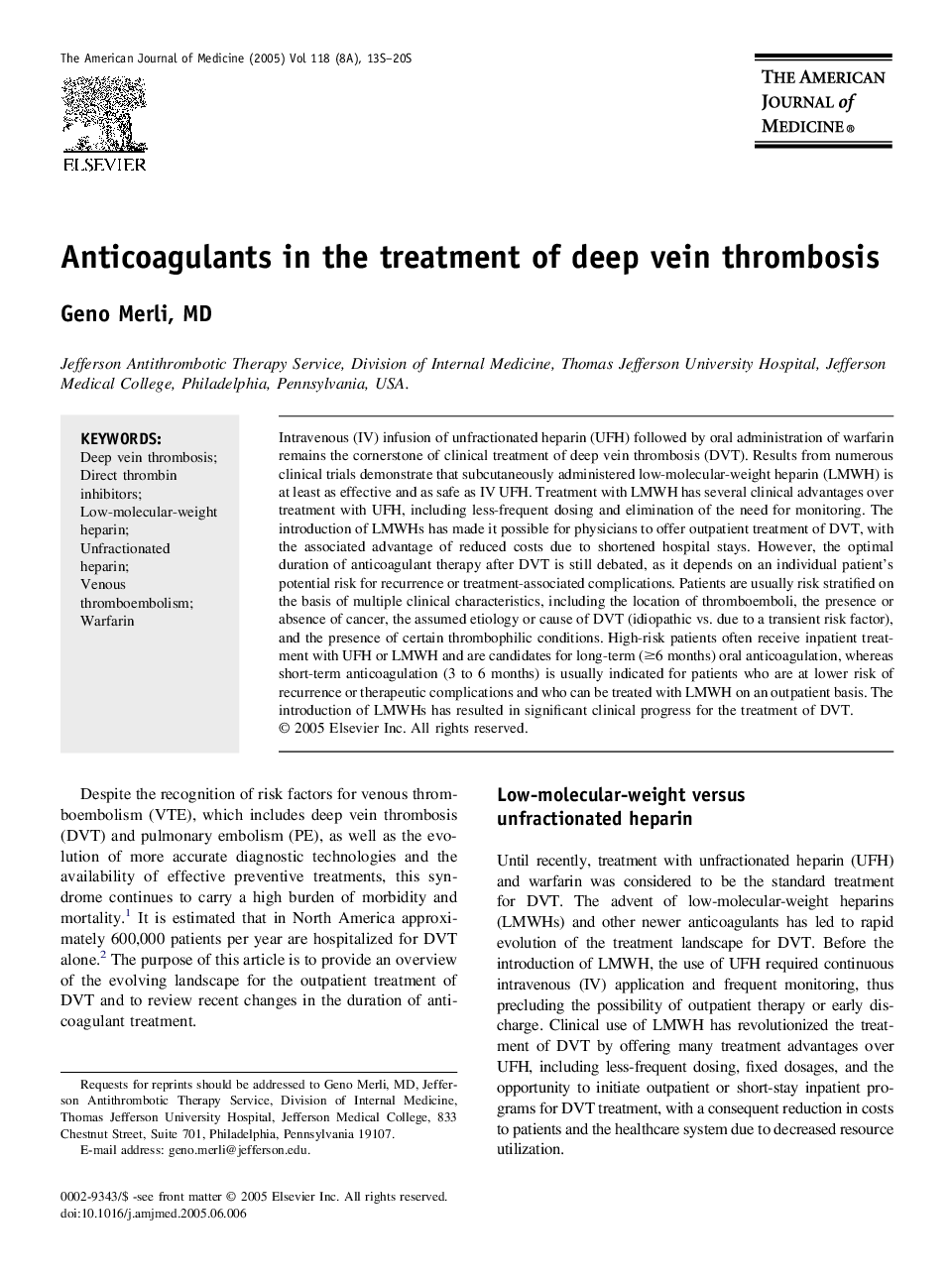| Article ID | Journal | Published Year | Pages | File Type |
|---|---|---|---|---|
| 9929412 | The American Journal of Medicine | 2005 | 8 Pages |
Abstract
Intravenous (IV) infusion of unfractionated heparin (UFH) followed by oral administration of warfarin remains the cornerstone of clinical treatment of deep vein thrombosis (DVT). Results from numerous clinical trials demonstrate that subcutaneously administered low-molecular-weight heparin (LMWH) is at least as effective and as safe as IV UFH. Treatment with LMWH has several clinical advantages over treatment with UFH, including less-frequent dosing and elimination of the need for monitoring. The introduction of LMWHs has made it possible for physicians to offer outpatient treatment of DVT, with the associated advantage of reduced costs due to shortened hospital stays. However, the optimal duration of anticoagulant therapy after DVT is still debated, as it depends on an individual patient's potential risk for recurrence or treatment-associated complications. Patients are usually risk stratified on the basis of multiple clinical characteristics, including the location of thromboemboli, the presence or absence of cancer, the assumed etiology or cause of DVT (idiopathic vs. due to a transient risk factor), and the presence of certain thrombophilic conditions. High-risk patients often receive inpatient treatment with UFH or LMWH and are candidates for long-term (â¥6 months) oral anticoagulation, whereas short-term anticoagulation (3 to 6 months) is usually indicated for patients who are at lower risk of recurrence or therapeutic complications and who can be treated with LMWH on an outpatient basis. The introduction of LMWHs has resulted in significant clinical progress for the treatment of DVT.
Keywords
Related Topics
Health Sciences
Medicine and Dentistry
Medicine and Dentistry (General)
Authors
Geno MD,
